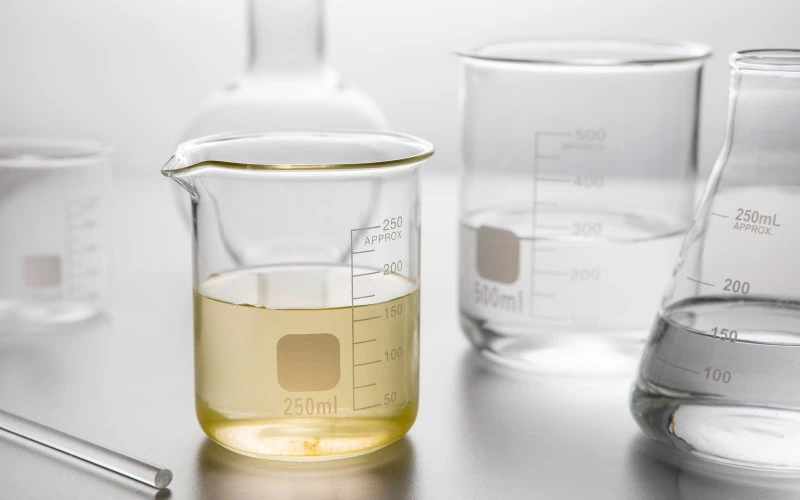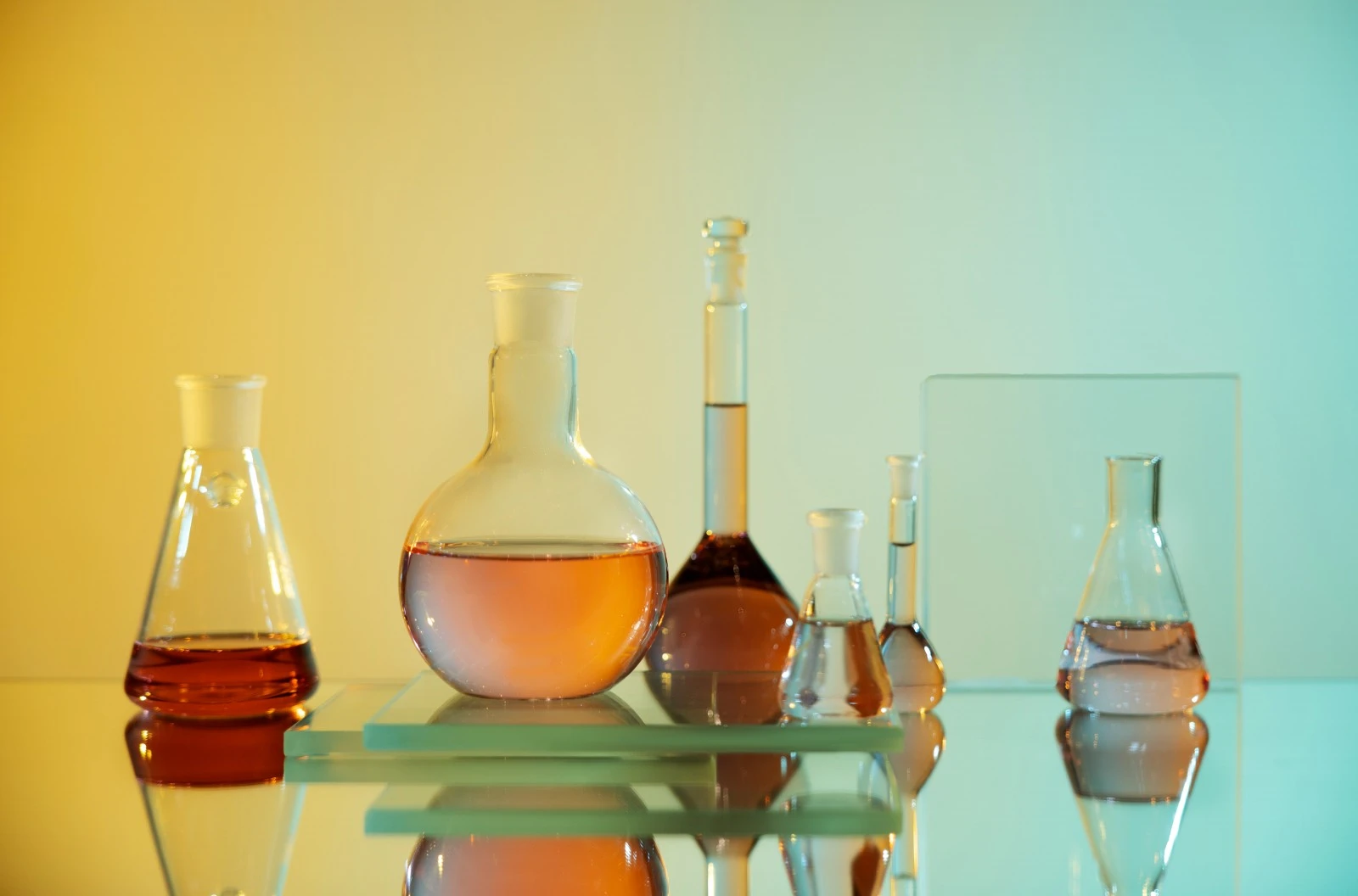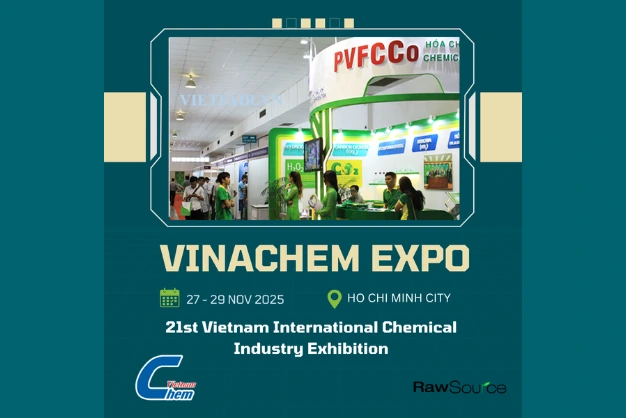TABLE OF CONTENTS
TABLE OF CONTENTS
What is Propargyl Alcohol?
Propargyl alcohol, a simple yet versatile organic compound, serves as a foundational building block in the realm of chemistry and industrial applications. At its core, propargyl alcohol is an alkyne, a type of hydrocarbon characterized by a carbon-carbon triple bond, which contributes to its reactive nature and utility in various chemical syntheses.
Chemical Identity and Properties
Chemically known as 2-Propyn-1-ol, propargyl alcohol boasts a structure that combines the reactive alkyne group with a hydroxyl group, making it both an alcohol and an alkyne. This dual functionality allows it to participate in a wide array of chemical reactions, including polymerizations, cycloadditions, and as a precursor to more complex molecules.
Industrial and Pharmaceutical Applications
In the industrial sphere, propargyl alcohol is prized for its role in the synthesis of polymers, coatings, and adhesives. Its ability to form polymers with unique properties has led to its use in creating materials with high thermal stability and resistance to corrosion, benefiting sectors ranging from automotive to electronics.
Furthermore, propargyl alcohol’s utility extends into the pharmaceutical industry, where it is employed in the synthesis of active pharmaceutical ingredients (APIs). Its reactivity enables the creation of complex molecules designed to interact with biological systems, leading to advancements in medication and treatment options.
Safety and Handling
Despite its wide applications, propargyl alcohol requires careful handling due to its reactivity and potential toxicity. It is classified as a hazardous material, necessitating strict safety protocols during storage, handling, and disposal to ensure environmental and personal safety.
Chemical Name of Propargyl Alcohol


Propargyl alcohol, known for its significant applications in both the industrial and pharmaceutical sectors, is identified chemically by the name 2-Propyn-1-ol. This designation is derived from systematic nomenclature practices that provide insight into the compound’s molecular structure and functional groups, making it identifiable and distinguishable within the scientific community.
Understanding the Nomenclature
The chemical name “2-Propyn-1-ol” encapsulates critical information about the compound’s structure
Importance of the Chemical Name
The precise chemical nomenclature of propargyl alcohol is vital for several reasons. It facilitates clear communication among chemists, researchers, and professionals across various fields, ensuring that everyone understands the exact substance being referenced. Moreover, it provides essential clues about the compound’s reactivity and compatibility with other chemicals, which is critical for formulating products, conducting research, and ensuring safety in handling and usage.
Propargyl Alcohol Structure
The molecular structure of propargyl alcohol, designated as 2-Propyn-1-ol, is a fascinating topic for chemists and industry professionals alike, owing to its unique features that contribute to its wide range of applications. Understanding this structure is crucial for grasping how propargyl alcohol behaves in various chemical reactions and formulations.
Molecular Composition
Propargyl alcohol comprises three carbon atoms, forming the backbone of the molecule. Attached to this carbon backbone are a hydroxyl group (-OH) and a triple bond, which are responsible for its distinctive properties and reactivity. The molecular formula for propargyl alcohol is C₃H₄O, indicating three carbon (C) atoms, four hydrogen (H) atoms, and one oxygen (O) atom.
Structural Characteristics
3D Molecular Structure
The 3D arrangement of atoms within propargyl alcohol influences its physical properties and interactions with other molecules. The linear geometry of the alkyne portion and the angular geometry around the hydroxyl group affect how propargyl alcohol engages in chemical reactions, including its ability to form hydrogen bonds with water and other hydroxyl-containing compounds.
Visual Representation
Chemists often use structural formulas to visually represent the arrangement of atoms in propargyl alcohol. These diagrams highlight the linear alignment of the carbon atoms, the position of the triple bond, and the attachment of the hydroxyl group, providing insight into the molecule’s chemical behavior.
Significance of the Structure
The structure of propargyl alcohol underlies its chemical versatility, allowing it to participate in a variety of chemical reactions, such as polymerization, cycloaddition, and nucleophilic addition. Its ability to act as a building block for more complex molecules makes it invaluable in synthetic chemistry, particularly in the production of pharmaceuticals, polymers, and specialty chemicals.
Propargyl Alcohol Synthesis
The synthesis of propargyl alcohol, known chemically as 2-Propyn-1-ol, is a subject of considerable interest in organic chemistry due to its utility as a building block in various chemical reactions and industrial applications. This section delves into the common methodologies employed in the production of propargyl alcohol, emphasizing the precision and expertise required to safely and efficiently generate this valuable compound.
Traditional Synthesis Methods
Historically, propargyl alcohol has been synthesized through several methods, each with its own set of reactants and conditions, tailored to optimize yield and purity
Modern Syntheses Techniques
Advancements in chemical synthesis have led to more efficient and environmentally friendly methods for producing propargyl alcohol
Purification and Quality Control
Following synthesis, propargyl alcohol often undergoes purification processes to remove impurities and ensure the highest possible quality. Distillation is a common purification technique, capable of producing propargyl alcohol with high levels of purity. Quality control measures, including spectroscopic analysis and chromatography, are implemented to confirm the compound’s identity and purity, ensuring it meets the stringent standards required for industrial and pharmaceutical applications.
Propargyl Alcohol CAS No
A critical aspect of chemical identification and regulation is the use of unique identifiers for substances, ensuring precise communication and management across various scientific and industrial domains. For propargyl alcohol, this unique identifier is represented by its Chemical Abstracts Service (CAS) number, which is 107-19-7. This section delves into the significance of the CAS number for propargyl alcohol and its implications in research, industry, and regulatory compliance.
The Role of CAS Numbers
The CAS number is a universally recognized identifier assigned to chemical substances by the Chemical Abstracts Service, a division of the American Chemical Society. Each CAS number is unique to its corresponding chemical, serving as a standardized reference that eliminates ambiguity in chemical nomenclature and facilitates the retrieval of comprehensive information about the substance, including its physical and chemical properties, safety data, and regulatory status.
Implications of CAS 107-19-7
For propargyl alcohol, the CAS number 107-19-7 is an essential tool for several reasons
Conclusion
In exploring propargyl alcohol, from its fundamental properties and chemical structure to its synthesis and practical applications, we unveil the profound impact this compound has across various sectors. Known chemically as 2-Propyn-1-ol and identifiable by its CAS number 107-19-7, propargyl alcohol serves as a cornerstone in the synthesis of polymers, pharmaceuticals, and specialized chemicals. Its versatility and reactivity, underscored by its unique molecular configuration, make it indispensable in advancing research and industrial processes. As we delve into the methods of its production, the evolution from traditional chemical reactions to greener, more sustainable approaches reflects the broader shift towards environmentally conscious manufacturing practices. Propargyl alcohol’s continued relevance in scientific and industrial applications exemplifies the dynamic intersection of chemistry and technology, driving innovation and discovery in the modern world.
Contact Us
Questions or looking for a quote?





